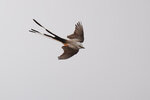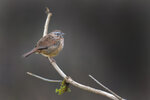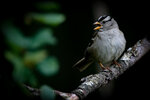


In recent weeks several readers have asked me to help them better identify the spring birds, and especially their songs. I suspect some of you have tried listening to the dawn chorus and been overwhelmed by the variety of songs and numbers of avian singers.
First, if possible, download the Merlin Bird ID App from the Cornell Laboratory of Ornithology. It’s free and available for both types of smart phones through your app store. Then, once you have the app, practice with it for a few minutes. It is organized by bird families and species, and you will want to become familiar with this organization.
Second, using Merlin, listen to the most common bird songs, starting with the American Robin. At dawn, and throughout the day, really, it seems that every robin in the neighborhood wants to sing its head off. After checking the app, listen to actual robins and become familiar with how they sound – their fluting notes. You will want to know this song so that you can ignore it while concentrating on other, non-robin songs that you are trying to hear.
Now, pick out a small set of similar birds to learn a bit better. I’d suggest the sparrows. They are often dismissed as “little brown birds,” but each species has a distinctive song and three of them are fairly common in town. Now singing in open, grassy areas is the White-crowned Sparrow. The male usually sits on a prominent perch and will sing throughout the day. Its classic song starts with two loud notes, the second higher in pitch, then quick follow-up notes.
The Song Sparrow is also very common but more likely to be hiding in brushy areas. Its song is vaguely like the White-crowned in pitch, but very different in its pattern. There are two short introductory notes followed by one loud, long note and then a trill. Listen to both these brown sparrows on Merlin a few times (and look at the photograph, as well) and you soon will learn to hear these two spring singers.
A third common sparrow now singing is the Oregon Junco. Juncos are regular at feeders, and you likely have encountered them in small flocks. As the fly away, their white outer tail feathers are distinctive. Now, listen to their song on Merlin. Junco males are now on-territory and singing a loud, slow trill note.
You can understand what I mean by slow trill by listening to the song of the male Spotted Towhee (located near the sparrows and junco on Merlin). They have an introductory chip followed by a loud, fast trill. The two songs – junco and towhee – have a similar pitch to their trills, but you would never confuse them because of their relative speed.
Now, as you have a few spare moments, keep exploring Merlin. Try comparing some of the warblers, or chickadees and nuthatches, or the several wrens.
Some of you have also asked me for an update about Liam’s big year (an attempt to see the largest possible species in the state) and how it’s going. Liam, of course, is the 15-year-old who provides most of our photographs. He tells me that he’s very pleased with the number of unusual birds he has seen, including two interesting new ones in the past two weeks.
The first is a single Hudsonian Godwit that recently showed up in the Chehalis River valley, near Elma, with a small number of Whimbrels. Both these species are large crow-sized shorebirds with long, impressive bills. The Whimbrel’s bill is curved, like other curlews, in contrast with the straight bill of the godwits (see Liam’s photograph, taken on a recent foggy morning). Whimbrels are regularly seen during migration, but Hudsonian Godwits are rare. These godwits winter in extreme southern South America and nest in northern tundra areas, including along Hudson Bay.
Liam’s second rare bird is a Scissor-tailed Flycatcher. This species is common and much loved in the southern Midwest; it is the state bird of Oklahoma. This year one of their number got disoriented and greatly overshot its migration target, ending up in Ocean Shores. It’s a light gray bird with salmon-pink flanks, but its most striking feature is a pair of long black and white tail feathers.
Someone living in Ocean Shores posted a picture on Facebook asking for someone to help identify this interesting bird that was perched on the wires nearby. Liam and his mother were out there the next morning (one never knows how long one of the vagrants might stay around). Liam got several great photos, posted them on the rare bird alert and for the next several days the traffic in Ocean Shores increased considerably.
George Walter is the environmental program manager at the Nisqually Indian Tribe’s natural resources department; he also has a 40+ year interest in bird watching. Contact him at george@theJOLTnews.com
Photos for this column are provided by Liam Hutcheson, a 15-year-old Olympia area birder and avid photographer.
1 comment on this item Please log in to comment by clicking here
Drutty
Thanks for the info on the bird app from Cornell. I have been using BirdNET and enjoying it! Makes walking even more fun!
Saturday, May 13, 2023 Report this